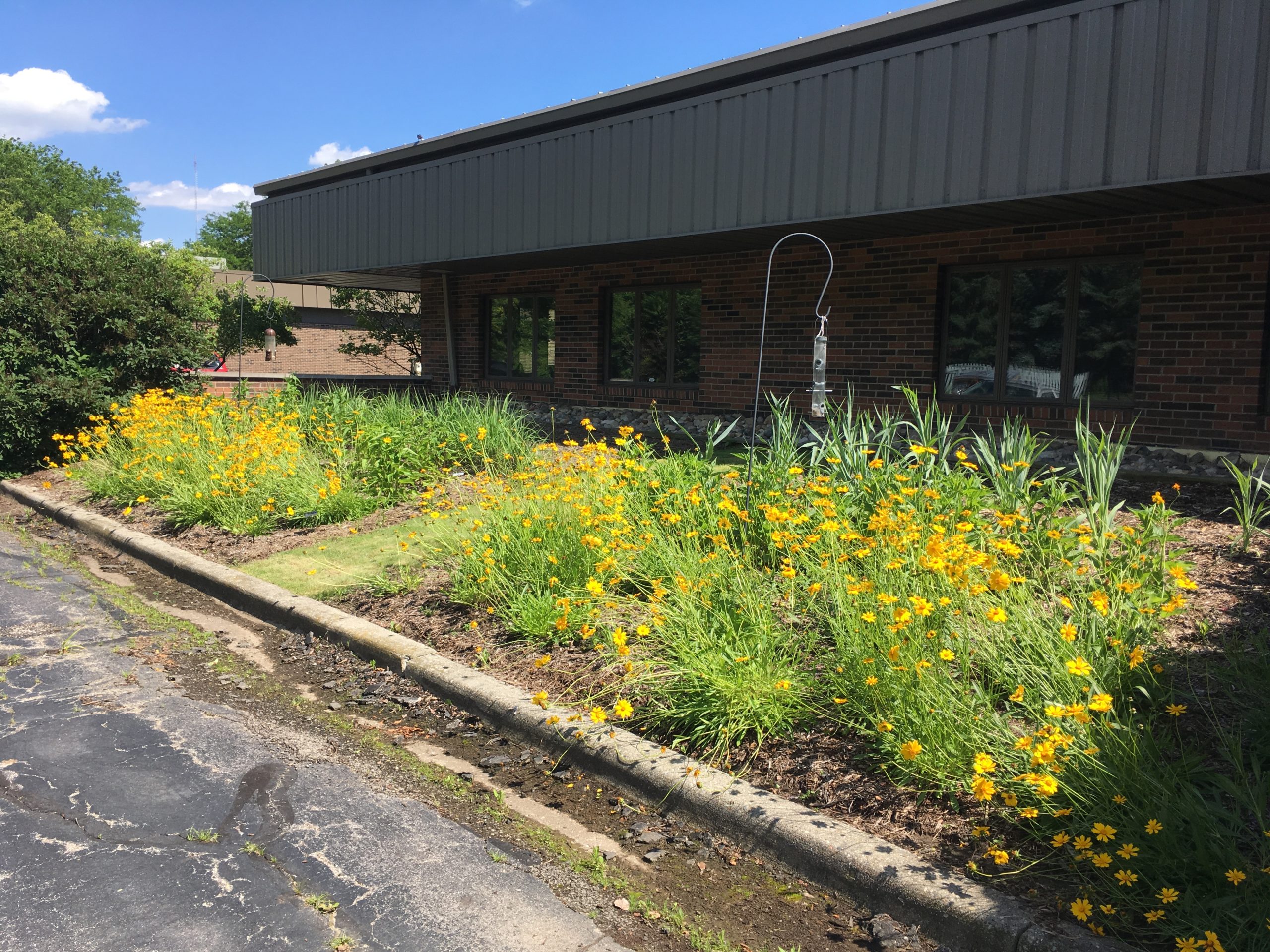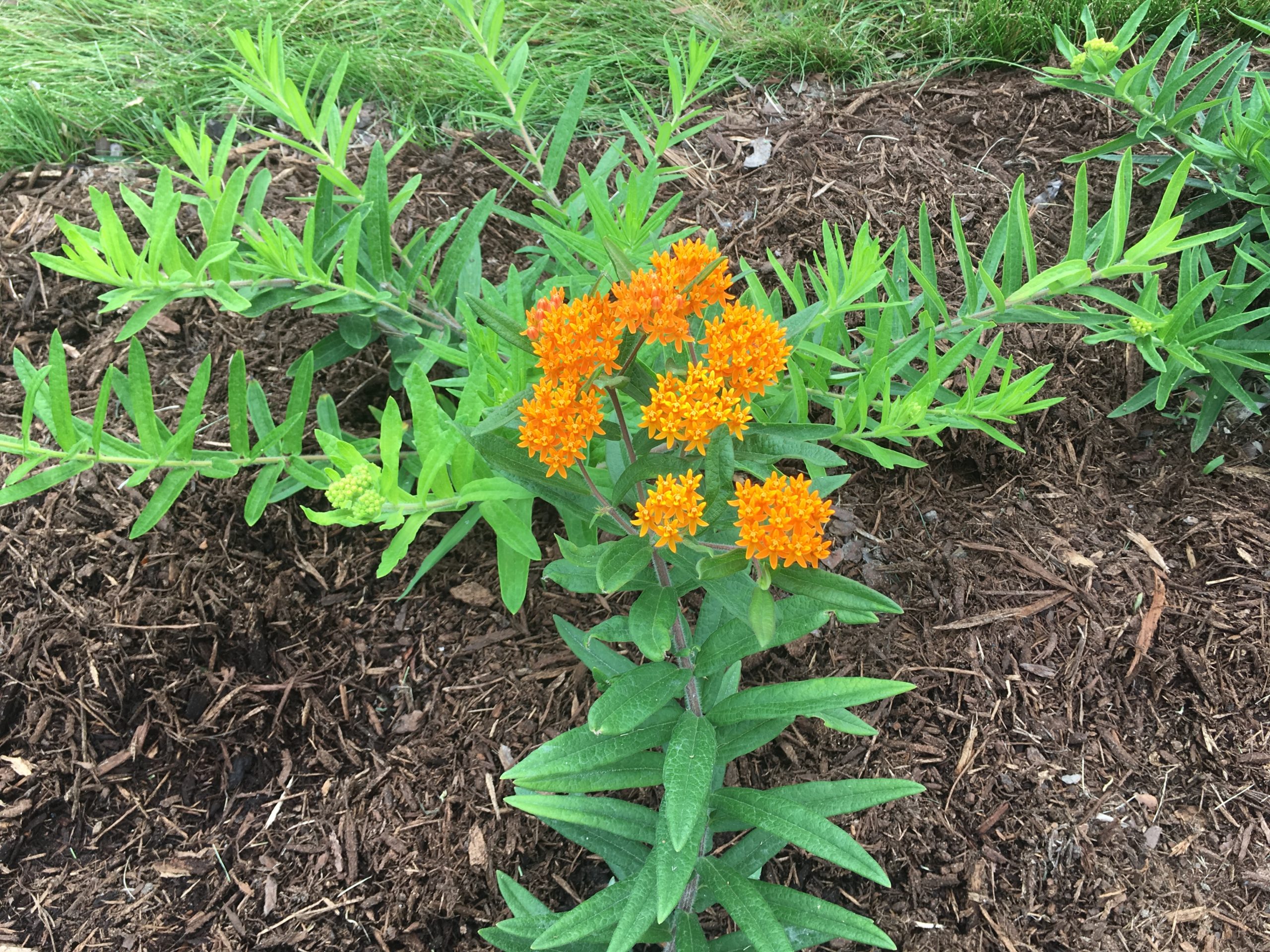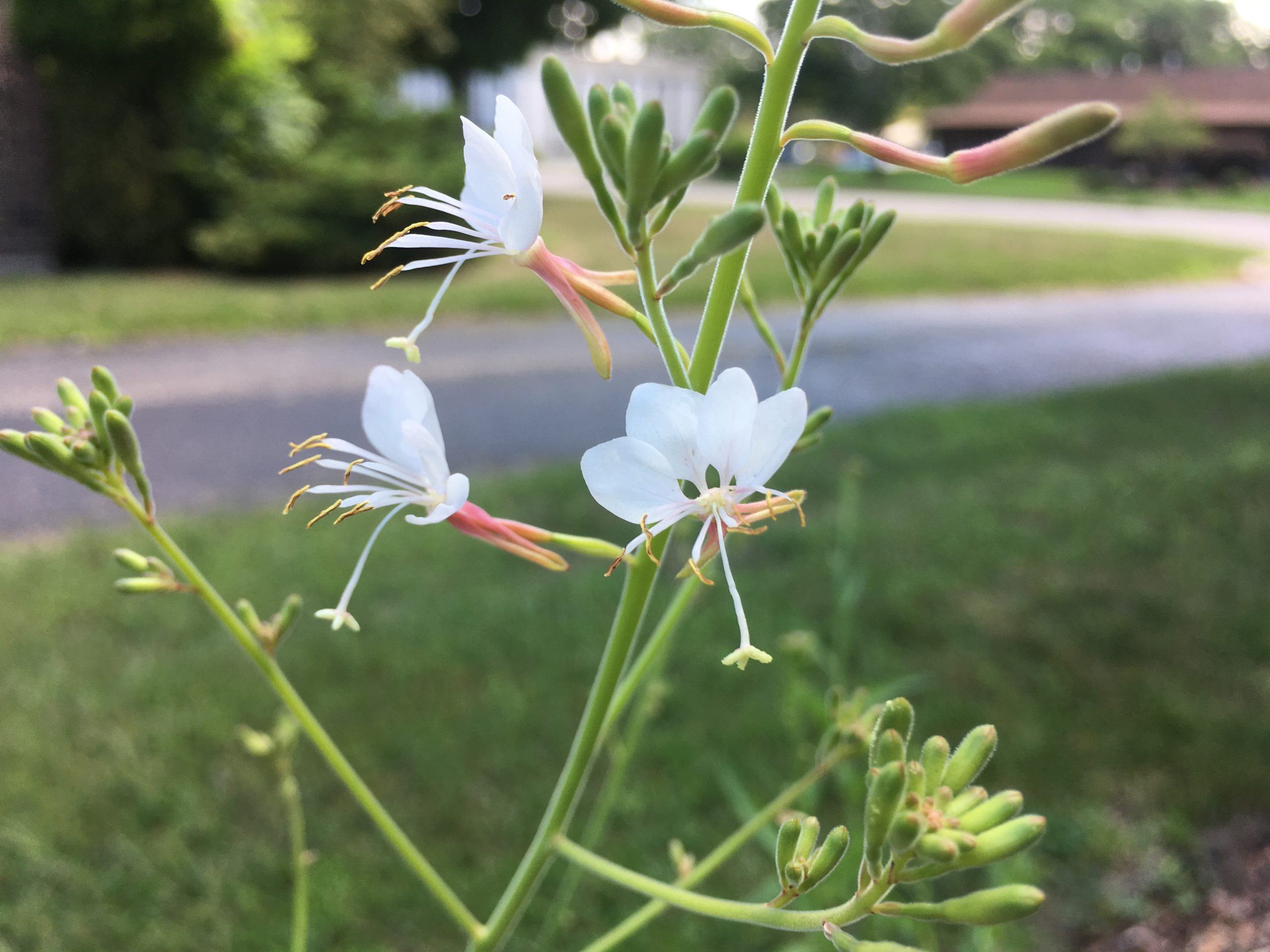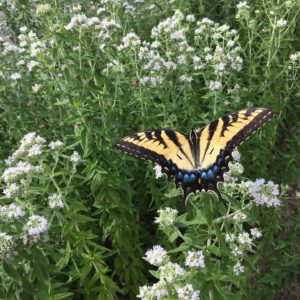 When was the last time you visited the Michigan Audubon office building? Most likely it was pre-coronavirus and long before things started to blossom in our outdoor space. If you haven’t visited recently, come check out the late summer blooms and full growth of the native gardens that Michigan Audubon and Michigan Nature Association have been working on together for the past few years. Please note, however, that the office building remains closed to all visitors due to COVID-19 precautions, but you may walk the grounds and observe the beauty of wildflowers and the pollinators buzzing around the blooms.
When was the last time you visited the Michigan Audubon office building? Most likely it was pre-coronavirus and long before things started to blossom in our outdoor space. If you haven’t visited recently, come check out the late summer blooms and full growth of the native gardens that Michigan Audubon and Michigan Nature Association have been working on together for the past few years. Please note, however, that the office building remains closed to all visitors due to COVID-19 precautions, but you may walk the grounds and observe the beauty of wildflowers and the pollinators buzzing around the blooms.
With Michigan Nature Association, and supported by two grants, we have been successfully and steadily transforming a non-native turf-grass and ornamental plant landscape into native gardens at the office grounds since 2018. It certainly is an exciting process to watch the plants grow, and to see flowers developing ever more fully each growing season!
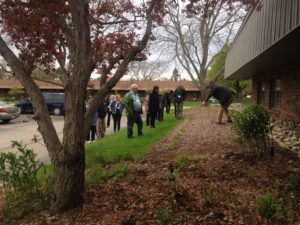
Attendees engage in a Backyard Bird Habitat Workshop in 2019.
Our overall purpose for this project and landscape transformation is to create functional, yet formal-looking landscapes that are bird-, bee-, and pollinator-friendly, which also serve as an education and outreach hotspot for visitors, habitat workshops, and inspiration for individuals and businesses to use native plants in landscaping. Michigan Audubon and Michigan Nature Association share natural landscape stewardship and restoration goals, and we strive to create publicly accessible spaces that reflect our conservation and education missions.
We would like to share some of our learning experiences in planning and establishing native gardens, to provide you with ideas for your own native gardening projects. A few short words of advice to start with: Keep it simple, start small, and don’t give up! Establishing a native garden plot can be challenging, especially when tackling a large space, and it takes time (and investment of your attention).
Our Process
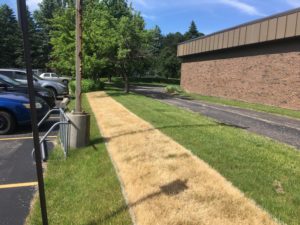
Turfgrass was burned prior to planting. Photo by Julie Stoneman
The first step at the office space began with dealing with non-native turfgrass (lawn!). Using a combination of herbicide, newspapers, and heavy mulch, the grass was killed and weed growth was suppressed. Garden bed preparation also included removal of non-native, ornamental shrubs, edging garden beds, and mulching.
Native plant seedlings (plugs) were planted directly into the ground, by digging individual plug-sized holes through the mulch and dead grass. We followed the invaluable guidance and direction from Christopher Hart, owner of Hartscapes LLC, who not only designed the two stages of native gardens at our office space but also provided labor and plants for the garden. The garden sections are designed with traditional landscaping in mind — sweeping swaths of color, appropriate height pairings, and overall “tidy” layout.
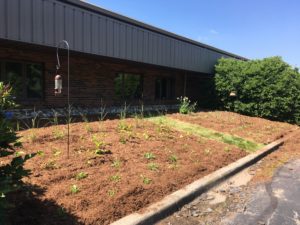
Mulch and seedlings are added after turfgrass is burned.
More than 1,000 individual plants composed the initial garden plantings at the office. Species include berry-producing bushes (black chokeberry, Aronia melanocarpa; fragrant sumac, Rhus aromatica), pollinator powerhouses (purple giant hyssop, Agastache scrophulariifolia; purple coneflower, Echinacea purpurea; mountain mint, Pycnanthemum muticum), and sheltering species (common juniper, Juniperis communis; little bluestem, Schizachyrium scoparium). In the rock garden section, you’ll find some unique species such as pasque flower (Pulsatilla patens) and prairie smoke (Geum triflorum).
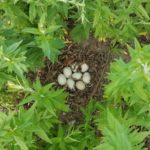
Mallard nest in garden.
Expect the Unexpected
Not surprisingly, with this summer (2020) being the third growing season for this native garden, the wildflowers have truly taken root and beautified the space. While I personally feel that I missed out on most of the early spring blooms (due to our office closure), it continues to be a pleasure to walk the grounds during a break, soak in the sunshine, and marvel at the vibrant colors.
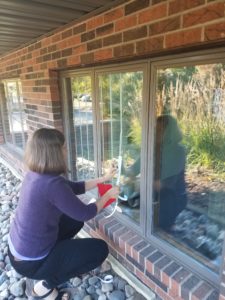
Applying window tape to prevent bird-window collisions.
Unexpectedly, we had a Mallard nest in a strip of garden along the parking lot this summer! It’s curious to think about how a bird selects her nesting spot, especially when it’s not necessarily the “best” spot. Sadly, this nest was predated pretty quickly. The Mallard nest was immediately surrounded by plant cover, but the habitat was only about three feet wide where she chose to nest with pavement on either side.
Staff have observed many more birds feeding from the native grasses and flowers outside our office windows — so much so that we decided to install window tape to prevent bird-window collisions! We have observed fledgling American Robins in the summer and seed-eating American Tree Sparrows and Dark-eyed Juncos in the winter eating seeds from the native grasses, American Goldfinches extracting tiny seeds from purple coneflowers, and so many more bird species dining from the buffet. Admittedly, this sometimes makes it hard to concentrate on the computer screen in front of me, when I can look to the side and watch the birds!
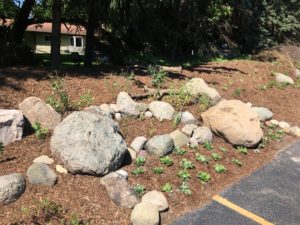
Rock garden at office. Photo by Julie Stoneman
Final Thoughts and Moving Forward
The transformation of our office landscaping would not have been possible without the collaboration and contributions of many. Grant funding was provided by a Burke Plants for Birds grant from National Audubon Society (2018 award, with match funding from Michigan Nature Association), and by a Wildflower Association of Michigan grant (2019 award). Hartscapes LLC provided landscape designs for the two phases of the garden installation, as well as overall direction of the garden installation. Most of the plants were sourced from Hartscapes, with some plants from Wildtype Nursery. District IIB Garden Club donated plant signs to the garden space. Both Michigan Nature Association and Michigan Audubon staff and volunteers have put in many dedicated hours to planning, installing, and maintaining the native gardens at our office park. Thank you to all who have helped out!
Phase three of the garden project at the office space will occur in upcoming seasons, and we’d love to have your involvement! We typically have a crew of volunteers who help throughout the growing season with weeding and garden maintenance (on pause for 2020), and there are other ways to contribute as well.
~ By Linnea Rowse, Conservation Program Coordinator
The Michigan Audubon office is located at 2310 Science Parkway, Suite 200, Okemos, MI 48864.
Starting From Scratch?
Michigan Audubon’s Bird-Friendly Communities program offers downloadable native garden designs and plant lists to suggest options for your space.
Michigan Native Plants for Bird-Friendly Landscapes booklet offers suggestions of various native wildflowers, grasses, shrubs, and trees that are beneficial to birds and pollinators, with information on growing conditions for each plant species and what elements it offers for birds (seeds, berries, etc.).
Michigan Native Garden Design For the Birds features native garden designs that are intentionally crafted to support birds while also providing an orderly space with traditional landscape ideals.
The second year of the native garden transformation at our office space used garden designs from this booklet — you will see the Sunny Bird Garden and Lawn Extension gardens at the north end of our parking lot. Plans are in place for the addition of three more gardens from this booklet in upcoming seasons, including the Summers-Knoll School Rain Garden, Forest Edge Bird Biohabitat, and Low-profile gardens.
Learn more about native plants and their importance to birds!

